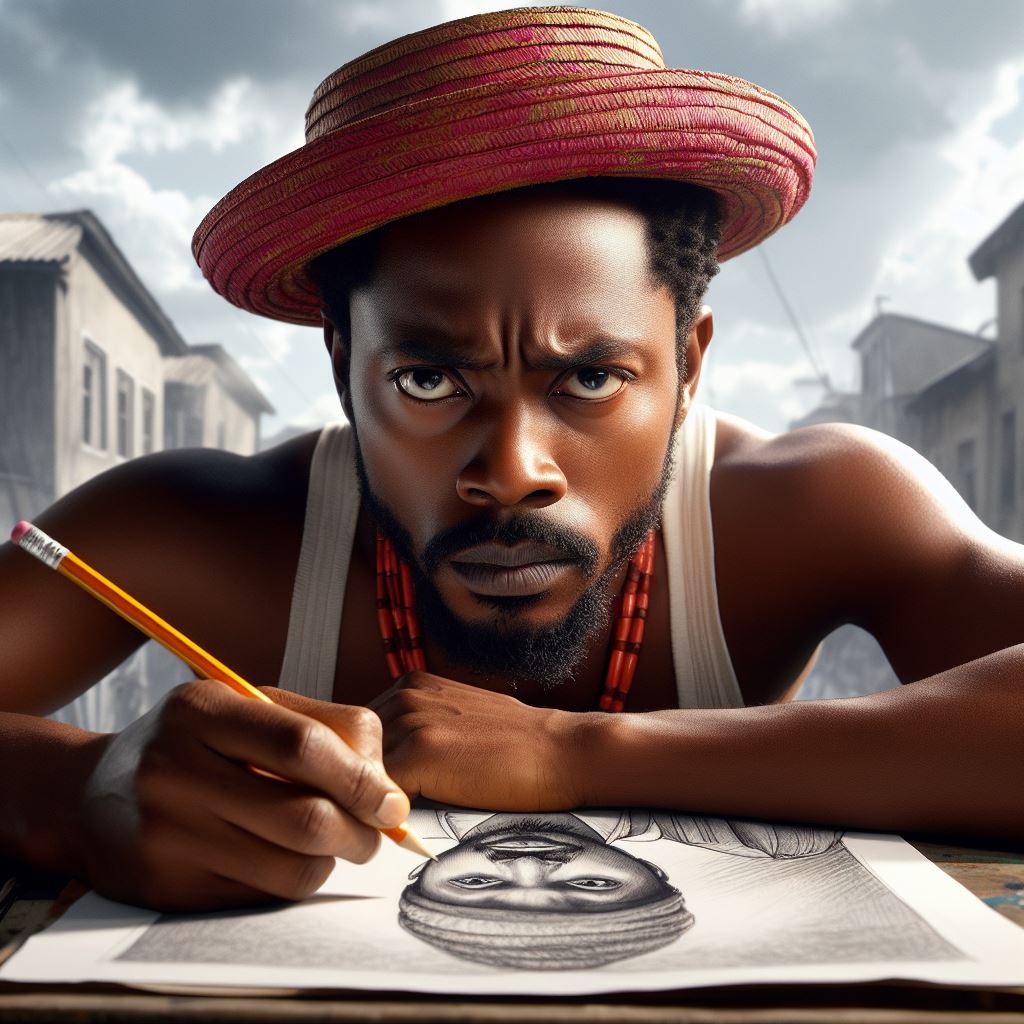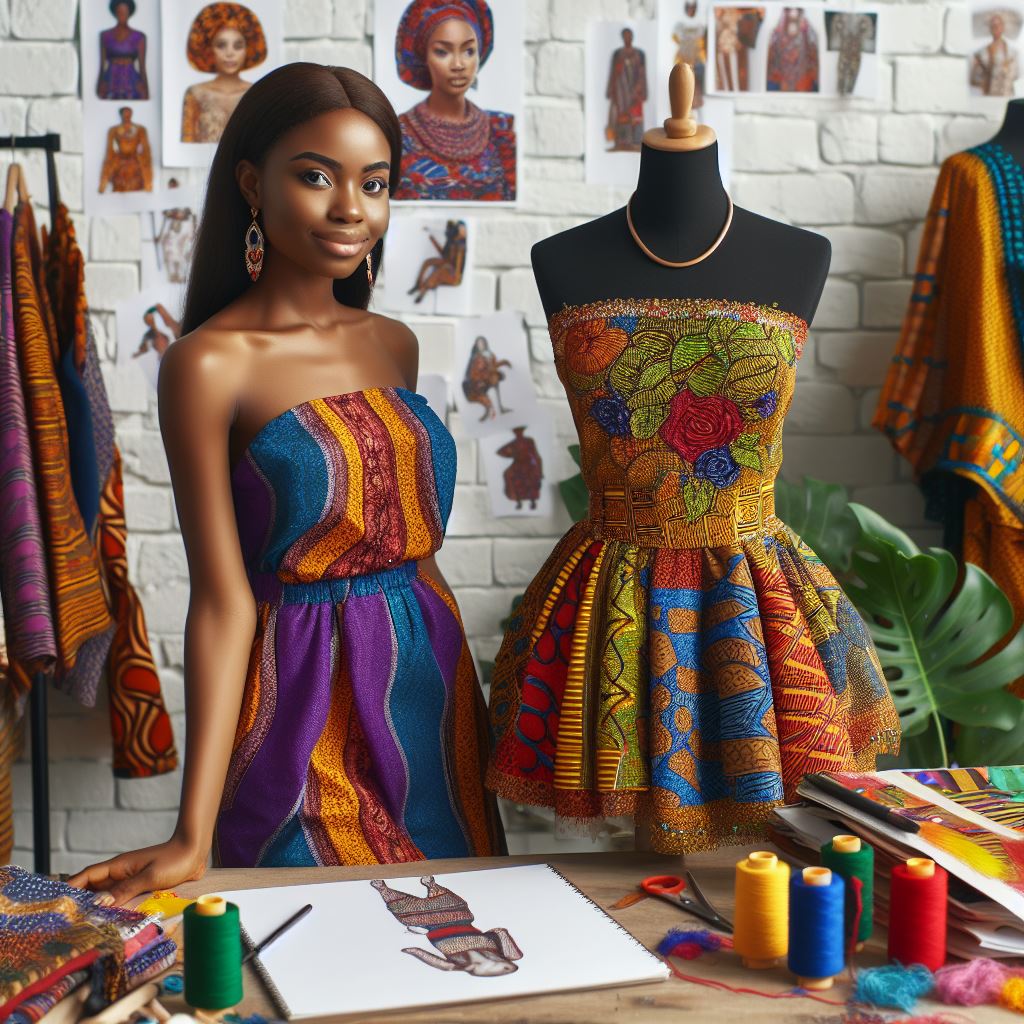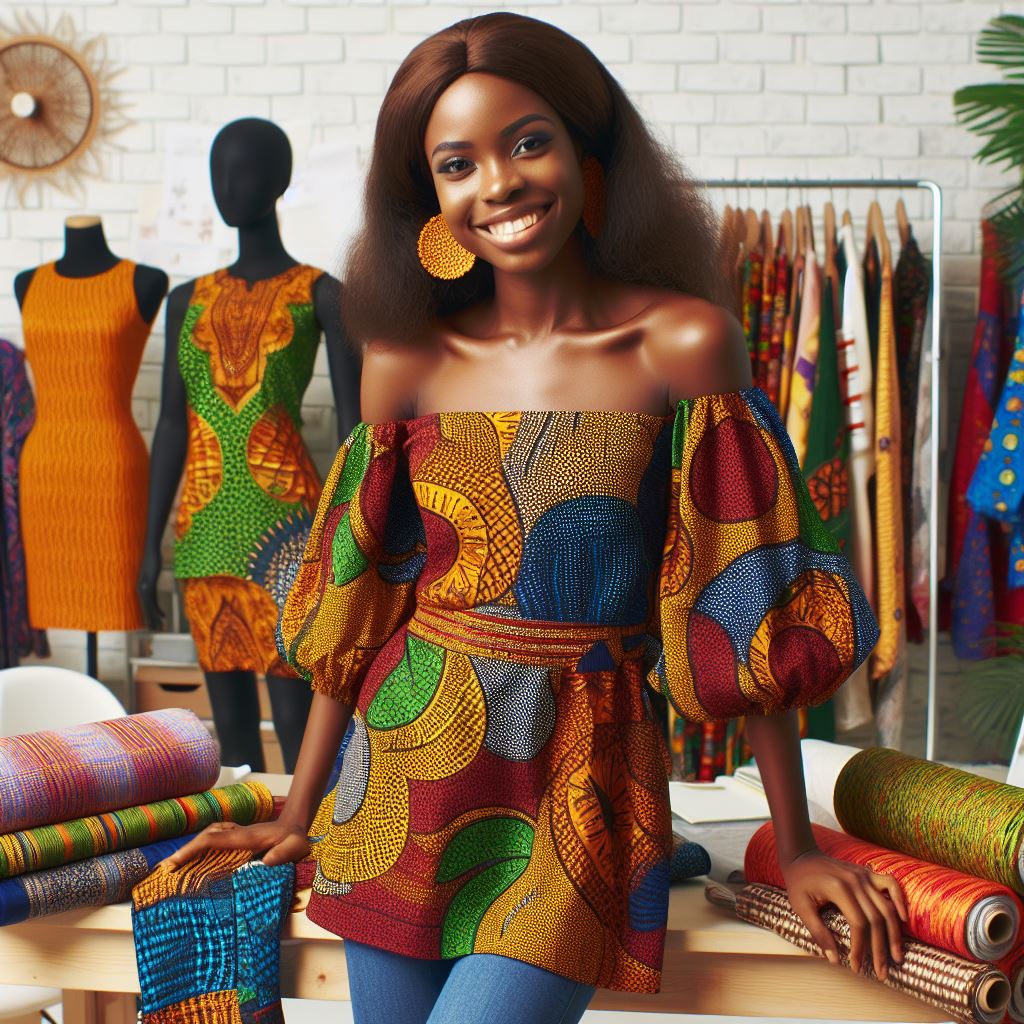Introduction
Fine art, encompassing diverse visual expressions like painting, sculpture, and multimedia installations, serves as a canvas for cultural narratives.
Cultural elements infuse fine art with distinctive flavors, influencing its themes, styles, and techniques.
Introducing Nigerian culture into the realm of fine art holds profound significance.
It not only adds depth and authenticity but also enriches artistic narratives with layers of heritage and tradition.
The richness and diversity of Nigerian culture provide fertile ground for artistic exploration.
Nigeria’s vast history, traditions, and multitude of ethnic groups contribute to its cultural tapestry.
Nigerian culture is a vibrant mosaic of expressions, from the vibrant colors of traditional attire to the rhythmic beats of indigenous music and dance.
Incorporating Nigerian cultural elements into fine art allows artists to pay homage to their heritage while contributing to cultural identity and representation discourse.
This section delves into the multifaceted ways in which Nigerian culture shapes and influences the world of fine art, celebrating its richness and diversity.
Elements of Nigerian Culture in Fine Art
Various aspects of Nigerian culture suitable for incorporation into fine art. These include traditional clothing, music, dance, and folklore
When it comes to incorporating Nigerian culture in fine art, there are various elements that artists can draw inspiration from to create unique and meaningful pieces.
Let’s explore some of these elements:
Traditional Clothing
- Adire fabric
- Aso-oke
- Agbada
- Gele
Nigerian traditional clothing is rich in colors, patterns, and textures that can be translated into beautiful works of art.
Artists can use the intricate designs of these fabrics to create visually stunning pieces that pay homage to Nigerian heritage.
Music and Dance
- Afrobeat
- Highlife
- Juju music
- Cultural dances like the Yoruba Bata dance or the Igbo Ekpe dance
The rhythm and movement of Nigerian music and dance can be captured in fine art to evoke a sense of energy and vitality.
Artists can use these elements to create dynamic and expressive pieces that reflect the spirit of Nigerian culture.
Folklore
- Anansi the Spider
- Queen Amina of Zazzau
- Sango, the god of thunder
- The creation story of the Igbo people
Nigerian folklore is filled with myths, legends, and stories that can inspire artists to create narrative-driven artworks.
By incorporating these tales into their pieces, artists can share the rich oral traditions of Nigerian culture with a wider audience.
Symbolism and Meanings
- The Adinkra symbols of the Akan people
- The use of color in Nigerian culture, like red for vitality and passion
- The significance of certain animals, like the eagle as a symbol of strength
Many elements of Nigerian culture are steeped in symbolism and meaning, which can add depth and layers to fine art pieces.
By understanding the cultural significance behind these symbols, artists can create works that resonate with viewers on a deeper level.
Preservation and Promotion
It is important to preserve and promote Nigerian culture through fine art as a way of celebrating and honoring the country’s heritage.
By incorporating elements of Nigerian culture into their work, artists can help keep traditional practices alive and introduce them to new audiences.
Essentially, the incorporation of Nigerian culture in fine art offers artists a wealth of inspiration to create unique and impactful pieces.
Artists draw inspiration from traditional clothing, music, dance, folklore, and symbolism. They create works showcasing Nigerian culture’s beauty while preserving and promoting it for future generations.
Read: Communication Arts: Balancing Theory and Practice
Traditional Nigerian Art Forms
In Nigeria, traditional art forms play a crucial role in preserving the country’s rich cultural heritage.
These art forms include pottery, sculpture, and textile design, among others.
Overview of Traditional Art Forms
- Pottery: Nigerian pottery is known for its intricate designs and vibrant colors, reflecting the diverse cultural traditions of the various ethnic groups in the country.
- Sculpture: Nigerian sculpture is characterized by its use of wood, bronze, and clay to create stunning pieces that often depict historical events, deities, or everyday life.
- Textile Design: Nigerian textiles are famous for their bold patterns and vibrant colors, with techniques like adire (tie-dye) and aso-oke (handwoven cloth) being popular among artisans.
Contemporary Incorporation of Traditional Art Forms
Contemporary Nigerian artists are increasingly turning to their cultural roots for inspiration, incorporating traditional art forms into their work in innovative ways.
- Many artists are blending traditional techniques with modern materials to create unique pieces that speak to Nigeria’s past while also reflecting its present reality.
- A sculptor could utilize traditional carving methods to address contemporary social issues, providing a fresh perspective on age-old themes.
- Textile designers experiment with new dyeing techniques and patterns, updating traditional designs to appeal to modern audiences while honoring cultural origins.
Fusion of Traditional and Modern Techniques
The fusion of traditional and modern techniques in Nigerian fine art represents a harmonious blend of the past and the present, creating a dynamic and evolving art scene.
- By combining age-old practices with contemporary aesthetics, Nigerian artists are able to create artworks that are both rooted in tradition and relevant to today’s global art market.
- This fusion not only showcases the diversity and creativity of Nigerian art but also serves as a bridge between the country’s cultural heritage and its future artistic direction.
- Incorporating traditional Nigerian art forms into fine art demonstrates the enduring legacy of the country’s artistic traditions. It showcases limitless possibilities for innovation and creativity in the modern art world.
Read: How to Apply for Communication Arts Programs
Representation of Nigerian Identity in Fine Art
How Nigerian artists use fine art as a means of expressing their cultural identity
Nigerian artists utilize fine art as a powerful tool to express their cultural identity.
Through various mediums such as painting, sculpture, and mixed media, these artists capture the essence of Nigerian heritage.
The role of fine art in representing and celebrating Nigerian heritage
The role of fine art in representing and celebrating Nigerian heritage cannot be overstated.
It serves as a visual platform for artists to delve into the depths of their cultural roots and showcase them to a global audience.
Nigerian artists incorporate traditional motifs, symbols, and colors into their artwork. They create pieces that resonate with their people and educate others about Nigerian culture.
The importance of showcasing diverse narratives and perspectives through fine art
One of the key aspects of showcasing diverse narratives and perspectives through fine art is the ability to challenge stereotypes and misconceptions.
Nigerian artists have the opportunity to reclaim their narratives and present them in a way that is authentic and empowering.
Through their artwork, Nigerian artists showcase the rich tapestry of Nigerian identity, highlighting the country’s history, traditions, and vibrant cultural practices.
This serves as a form of cultural preservation and legacy for future generations.
Exploring themes like traditional ceremonies, folklore, and everyday life offers a glimpse into Nigeria’s diverse cultural landscape.
This not only fosters a sense of pride among Nigerians but also promotes cross-cultural understanding and appreciation.
Read: Introduction to African and Asian Studies in Nigeria

Challenges and Opportunities in Incorporating Nigerian Culture in Fine Art
When it comes to incorporating Nigerian culture in fine art, artists face various challenges along with opportunities.
Let’s delve into the complexities that come with blending Nigerian heritage and artistic expression.
Challenges Faced by Artists
- Cultural Appropriation: Artists must navigate the fine line between appreciating and appropriating Nigerian culture in their work.
- Commercialization: There is a risk of exploiting Nigerian culture for commercial gain, which can be seen as unethical.
- Misrepresentation: Artists need to ensure they accurately portray Nigerian culture without falling into stereotypes or clichés.
- Authenticity: It can be challenging for artists to authentically represent Nigerian culture if they are not intimately familiar with it.
- Reception: Not all audiences may understand or appreciate the nuances of Nigerian culture depicted in art, leading to misunderstandings.
Opportunities for Collaboration and Innovation
- Cultural Exchange: Collaborating with Nigerian artists can lead to a rich exchange of ideas and perspectives, enhancing the creative process.
- Mutual Learning: By engaging with Nigerian culture, artists can learn valuable lessons about history, tradition, and diversity.
- Innovation: The fusion of Nigerian culture with fine art can spark innovative and groundbreaking creations that captivate audiences.
- Global Reach: Incorporating Nigerian culture in fine art can attract a global audience, increasing visibility and appreciation for the culture.
- Social Impact: Art has the power to provoke conversations and educate people about Nigerian culture, fostering greater understanding and empathy.
Supporting and Empowering Nigerian Artists
- Recognition: Acknowledging and celebrating the work of Nigerian artists who incorporate their culture in their art is essential for validation and visibility.
- Resources: Providing resources, such as funding, studio space, and mentorship, can help Nigerian artists further explore their cultural heritage in their work.
- Education: Offering educational opportunities and workshops focused on Nigerian culture can equip artists with the knowledge and skills needed to authentically represent it.
- Networking: Building a strong community and network of Nigerian artists can create a supportive environment for collaboration, growth, and mutual empowerment.
- Advocacy: Advocating for the rights and representation of Nigerian artists in the art world can help dismantle barriers and biases they may face.
Generally, incorporating Nigerian culture in fine art presents challenges, but offers vast opportunities for collaboration, innovation, and empowerment.
By addressing obstacles and leveraging Nigerian artists’ strengths, we can create a more inclusive, diverse art landscape.
Read: Famous Nigerian Alumni of Communication Arts Programs
Impact of Nigerian Culture on Fine Art
Nigerian culture has had a significant impact on the global art scene, influencing artists worldwide.
Nigerian artists are actively contributing to the representation of African art on the international stage.
The unique perspective and aesthetic that Nigerian culture brings to the world of fine art cannot be overlooked.
Influence of Nigerian Culture on the Global Art Scene
- Nigerian culture is rich and diverse, offering a plethora of inspiration for artists around the world.
- The vibrant colors, intricate patterns, and traditional motifs in Nigerian art captivate audiences globally.
- Nigerian artists infuse their work with cultural elements, creating pieces that resonate with audiences on a deeper level.
Contribution of Nigerian Artists to African Art Representation
- Nigerian artists play a pivotal role in showcasing the diversity and talent of African art on a global platform.
- Through their unique style and storytelling, Nigerian artists challenge stereotypes and misconceptions about African art.
- By participating in international exhibitions and collaborations, Nigerian artists elevate African art to a broader audience.
Unique Perspective and Aesthetic of Nigerian Culture in Fine Art
- Nigerian culture’s blend of tradition and modernity brings a fresh and dynamic perspective to the art world.
- The incorporation of Nigerian folklore, mythology, and societal issues in fine art adds depth and complexity to the narrative.
- Nigerian artists often experiment with various mediums and techniques to express the essence of their cultural heritage.
Conclusion
Lastly, the infusion of Nigerian culture into fine art not only enriches artistic expression but also serves as a powerful vehicle for preserving and celebrating cultural heritage.
By incorporating elements of Nigerian traditions, history, and customs, artists create vibrant and authentic narratives that resonate with audiences worldwide.
It is crucial for readers to actively explore and support Nigerian artists who are dedicated to showcasing their cultural heritage through their work.
By engaging with their creations, individuals contribute to the promotion and preservation of Nigerian culture while also fostering a greater understanding and appreciation of its richness and diversity.
As Nigerian fine art continues to evolve, embracing and celebrating its cultural roots will remain paramount.
This evolution promises a dynamic future where artists draw inspiration from their heritage to create innovative and compelling works that captivate audiences and contribute to the global art discourse.
Through this ongoing exploration, Nigerian fine art will continue to thrive, serving as a beacon of cultural pride and creativity for generations to come.




